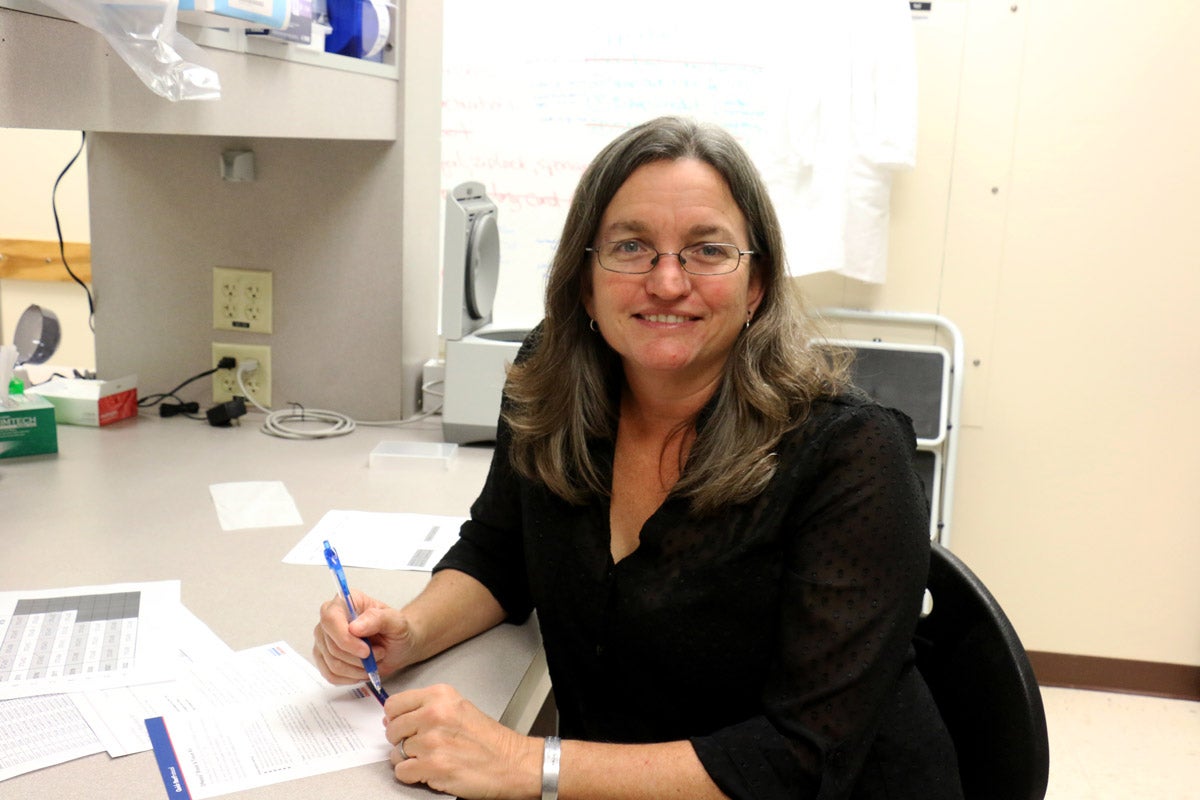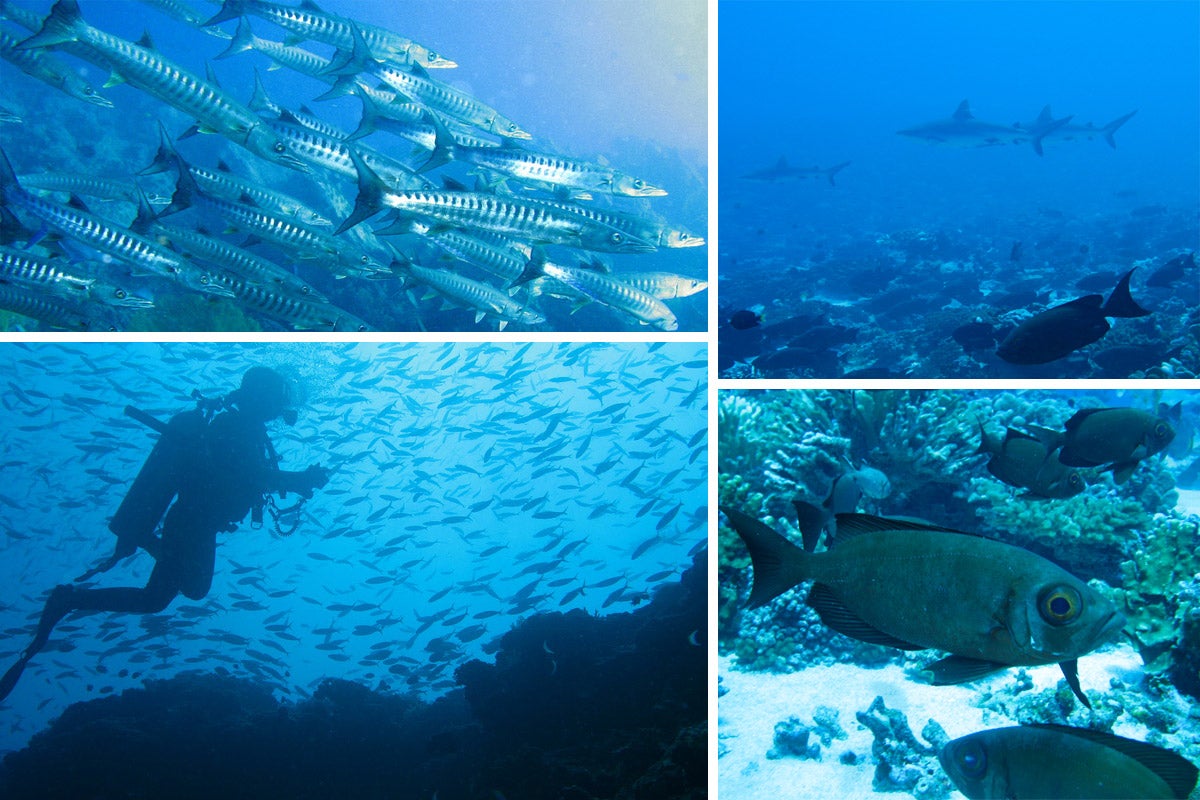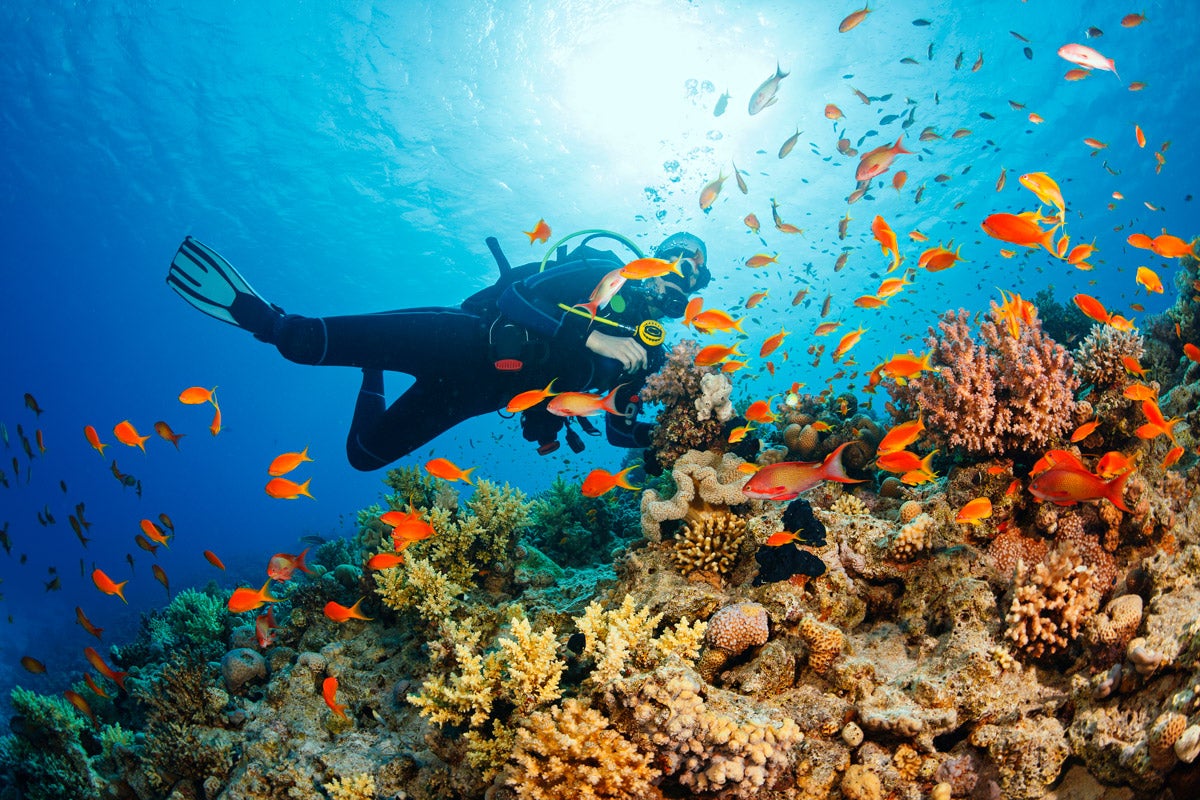World Oceans Day — held each June 8 — is an opportunity to promote campaigns and initiatives that bring ocean issues to the forefront. This year’s observance follows recent research that suggests the amount of plastic in the ocean is worse than scientists previously expected. A garbage patch in the Pacific Ocean is now twice as big as Texas, and dead whales have been washing ashore with plastic in their stomachs.
“A lot of the secrets of evolution and how new species arise can be found in the water. You can learn a lot about planet Earth and how biodiversity originates and is maintained by studying where it originated.”
UCF Today talked about these issues with Assistant Professor of Biology Michelle Gaither, a deep-ocean expert who has been studying sea creatures for more than 20 years. Her lab focuses on evolution, ecology and the origin of biodiversity in marine animals.
Allison Hurtado: What is our greatest threat to the oceans?
Michelle Gaither: The threats to oceans are multipronged. When you think about life in the oceans, overexploitation is certainly one of the biggest problems, but global warming is equally problematic.
The oceans are the biggest habitat on planet Earth, and that’s especially true for the deep ocean, which is the part we don’t typically see or explore. We only see the thin layer on the surface where most fisheries are conducted and where coral reefs and mangroves are found. Global warming is going to cause loss of habitat not just in shallow habitats but evidence indicates that even the deep oceans will be affected. This means that species will have to adapt to changing temperatures, and do so quickly within a few generations, or shift where they live. Some species will be able to make this adjustment but others will not and the end result will be that our marine communities will be different and where we find plants and animals will change.
Ocean acidization is another big issue. There is so much carbon dioxide in the air, as it gets sequestered in the oceans it changes the acidity and chemistry of the water, which also affects an organism’s ability to survive.
In places like Florida, the economy is tied to the marine habitat and the organisms that live there. As those things change or shift, economies are impacted. For example, recreation or sport fishers might not be able to use the same fishing grounds or prized species may no longer be found in traditional or popular fishing holes. If the animals move or cannot survive due to changing conditions, that affects us as humans. That’s also true of food supplies in places such as the developing world where people still fish for sustenance.

AH: What’s one threat people wouldn’t perhaps think of?
MG: Habitat alteration due to fishing and resource exploitation. One thing we don’t always talk about is the impact of destructive fishing methods. Not all fisheries are dirty but some fishing methods are particularly destructive. For instance, some bottom trawling is not only destructive but also nonselective, meaning you catch everything from the bottom including “trash” fish and destroy habitat in the process. This happens when a big net shaped like a funnel is dragged across the ocean floor. A chain on the bottom edge of the funnel weighs the net down and buoys on the top edge of the funnel keep the funnel open. So you end up with a funnel with a big open mouth and it drags across the bottom of the ocean taking up or mowing down everything in its path including rocks, sponges and other invertebrates. None of which are commercially valuable but all form habitat.
“When we drag these heavy nets across the bottom of the ocean we destroy it, one swath at a time.”
Habitat is important for all animals and depending on the species they might live on sponges, in sediment, or in little rocky cracks or crevices. When we drag these heavy nets across the bottom of the ocean we destroy it, one swath at a time. I’d compare it to clear-cutting a forest. Without a place to live, animals can’t survive.
AH: What happens to the ocean if there aren’t any fish?
MG: The whole system collapses. For example, [look at] algae wastelands. If you take out algae-eating fishes or sea urchins, you could have algae taking over where other habitats used to be. Algae are important to the system but they are just one part of the system.
A complex food web is a healthy food web. Photosynthesis by plankton is the basis for all marine food webs. Phytoplankton are eaten by zooplankton, which in turn are eaten by larger organisms, which are eaten by small fish, which are eaten by larger fish and so on until we reach the apex predators such as tuna and sharks. Any layer that goes missing, whether it’s the apex predator or the plankton, the whole food web can get knocked off balance. It’s sort of a checks and balance. Worst case scenario is the ocean turns into a soupy giant algae bloom — it would be weird.

AH: What made you decide to study the deep ocean? What keeps you studying it?
MG: What’s interesting to me is how the organisms change so rapidly with depth. As humans, we tend to think along the horizontal plane with places like the Coral Triangle, the Caribbean, east Pacific and/or the northeastern coastline. It’s all different. You get cod, snook or butterflyfishes — all in different places. However, there is a whole different layer of biodiversity we forget about. Species change just as dramatically as you go down deeper in the ocean. It’s not just horizontal, it’s vertical.
“I feel that studying the ocean is the way to respect it and stay in touch with how we as humans are ultimately tied to the oceans.”
In fact, the ocean changes along the vertical slope are much more dramatically than across the horizontal plane. For instance, if you go down 3,000 meters in depth, the species found there are different, but if you move 3,000 meters along the Florida coast, there is little change in the species you will find. One of the factors is access to light.
Everything at those deep depths relies on what’s coming from up above where photosynthesis occurs. For the first decade of my career, I was looking along the horizontal plane, but now I’m also investigating the vertical plane where change happens on a much smaller spatial scale.
AH: What can we learn about ourselves and the planet by studying our oceans’ depths?
MG: Life began in the oceans. This includes plants and animals. I think that a lot of the secrets of evolution and how new species arise can be found in the water. You can learn a lot about planet Earth and how biodiversity originates and is maintained by studying where it originated.
Culturally, we are tied to the oceans. Our love of the water and the food it provides can be seen everywhere, whether it be the seafood we eat, or the days we spend at the beach, or people who like to go out to fish for fun. I think it’s important to just appreciate our ties to the ocean — from the very beginning of life on planet earth to modern-day recreational fishers — and I feel that studying the ocean is the way to respect it and stay in touch with how we as humans are ultimately tied to the oceans.





